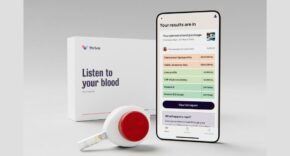The digitalisation of Continuing Healthcare (CHC) Assessment process is the right course of action to drive productivity, increase speeds in decision making, and in turn, improve the patient experience, says Karen Smith, Service lead, NHS Continuing Health Care and Complex Care at Cheshire and Wirral Clinical Commissioning Groups (CCGs).
As a collective, we want the service in Cheshire and Wirral to be known for being the best in England; both in terms of innovation and providing the highest quality patient care. But to move forward we need to understand inefficiencies in our processes, so we can rectify these to ensure we deliver a truly effective service to our patients.
Our patients under Continuing Healthcare and Complex Care are often our most complex and vulnerable patients. They have needs that have arisen as a result of disability, accident or illness, so it is vital that their cases are assessed, reviewed and case managed in a timely manner according to The National Framework.
The NHS England target is for 80% of patients to receive a decision in relation to NHS CHC eligibility within 28 days to ensure individuals receive the care they require in the appropriate environment and without unreasonable delay. A year ago, we were not reaching this target but today is a different story. Within two quarters, we have increased from 68% to 82%, a marked improvement and excelling targets.
Technology as the enabler
What can we attribute this turnaround to? Quite simply by eliminating paper based processes and automating workflow processes. Historically, by using the national paper forms, it made it difficult to manage the CHC process efficiently, particularly, when distributed across multiple stakeholders and locations.
There were several points of access with inconsistent handling and a paper based world meant that there could be lost referrals and sometimes no oversight on who was waiting for assessment.
We needed to drive greater integration in health and social care, from acute care to community health providers so transparency was key. After a thorough evaluation, we knew we needed a paperless system so we could hold all of our data in one place, allowing the sharing of information in a timely manner and enabling us to meet our targets.
We therefore decided to work in partnership with IEG4 to develop a cloud-based end to end digital solution called CHC2DST. We also introduced a single point of access. There are efficiencies in doing this to scale across all five CCGs. By working together, the paperless environment provides us with greater transparency, more secure working and faster patient outcomes.
Digitalisation of CHC assessments
We have found one of the main benefits to digitalising CHC assessments is that it is easier to store patient data, and to do so securely, as well as improving efficiency and reducing costs associated with paper based processes, such as postage and paper spend. With the previous way of working, patient details would have to be inputted manually – taking up 15 to 20 minutes each time – and this might then happen multiple times. As such, the paper-based process from referral, assessment and review could cause extensive delays in processing. We can now completely automate this process. This means processes are easier for staff so they can do more, in less time – a great step in the direction for CHC and to the benefit of our patients and staff.
Greater transparency offered by the digital solution also allows more consistent assessment of the positive referrals received by the CHC team. Referrals would previously have been received by email, phone, fax or mail. Now, it’s routinely checked and progressed to the next stage in a matter of hours, sometimes even minutes.
Another advantage is that once patient details are added to the system, they stay there. Because the system is pre-populated, this means reduced duplication patient details can be pulled up from any of the five CCGs for any patient when processing referrals or managing the database. This is also a major step in the right direction for the Paperless NHS 2020 agenda.
Improving the patient experience
Overall, we have achieved a consistent thorough approach with this single point of access which has meant that there is improved record keeping for every step of the process. No patients have been lost in the system and time saved on administration tasks has allowed for better resource allocation.
By pioneering this, we have shown how performance can be turned around in a very short time frame and highlighted to other CCGs, considering the move to a paperless environment, that it can be done. Allowing staff to speed up decision making, in turn improves the patient experience, which is paramount to us.
Technology has been key to us on our transformation journey, but the engagement of staff has been critical. By involving them from the start and letting the IT follow our ways of working to deliver service in line with the National Framework, we have created an innovative approach that is clearly working.













